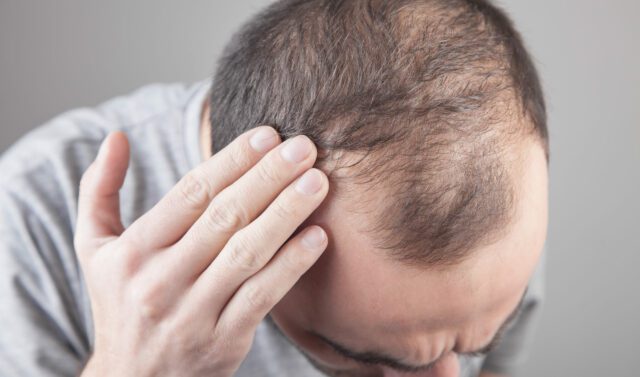Understanding Male Pattern Baldness and Available Treatments
Male pattern baldness, medically known as androgenetic alopecia, is the most common cause of hair loss in men. It affects nearly 50% of men by the age of 50, and for many, it can begin much earlier. This condition is characterized by a receding hairline, thinning of hair on the crown, and in some cases, complete baldness. While hair loss can be distressing, understanding its causes and exploring the available treatments can help manage and even reverse its effects.
What Causes Male Pattern Baldness?
Male pattern baldness is primarily driven by genetic and hormonal factors. It is linked to the male hormone dihydrotestosterone (DHT), a derivative of testosterone. DHT binds to receptors in hair follicles, causing them to shrink over time, which leads to shorter, finer hair. Eventually, the follicles stop producing new hair altogether. The pattern of hair loss often starts at the temples and crown, gradually progressing over time. For those looking to address this condition effectively, hair transplants London clinics offer advanced, long-term solutions tailored to individual needs.
Genetics play a crucial role in determining an individual’s susceptibility to male pattern baldness. If you have close relatives who experienced significant hair loss, you are more likely to develop the condition as well. Other contributing factors may include age, lifestyle, stress, and overall health.
Treatment Options for Male Pattern Baldness
While male pattern baldness is a progressive condition, several treatments are available to slow down, stop, or even reverse hair loss. These treatments range from medications to surgical interventions, and choosing the right one depends on the extent of hair loss and personal preferences.
- Medications:
- Minoxidil: An over-the-counter topical treatment, Minoxidil is applied directly to the scalp. It helps to stimulate hair growth and slow hair loss. While effective for many, it requires consistent use, and the results may vary from person to person.
- Finasteride: A prescription oral medication, Finasteride works by inhibiting the production of DHT, the hormone responsible for hair follicle shrinkage. It has been shown to significantly reduce hair loss and promote regrowth in some men. However, it can have side effects, so it’s important to discuss these with a healthcare provider.
- Hair Transplant Surgery:
- For men with significant hair loss, hair transplant surgery can be an effective solution. The most common techniques include Follicular Unit Transplantation (FUT) and Follicular Unit Extraction (FUE).
- FUT involves removing a strip of scalp from the back of the head, from which individual hair follicles are extracted and transplanted to the thinning areas.
- FUE, on the other hand, involves removing individual follicles directly from the donor area and transplanting them to the desired areas. FUE is less invasive and results in minimal scarring, making it a popular choice.
- Hair transplants offer a permanent solution with natural-looking results, especially when performed by skilled surgeons.
- For men with significant hair loss, hair transplant surgery can be an effective solution. The most common techniques include Follicular Unit Transplantation (FUT) and Follicular Unit Extraction (FUE).
- Low-Level Laser Therapy (LLLT):
- LLLT is a non-invasive treatment that uses low-level lasers to stimulate hair follicles and promote hair growth. It’s often used in combination with other treatments like Minoxidil or hair transplants to enhance results.
- Platelet-Rich Plasma (PRP) Therapy:
- PRP therapy involves drawing a patient’s blood, processing it to concentrate platelets, and then injecting the plasma into the scalp. The growth factors in PRP stimulate hair follicles, promoting regrowth and improving hair density. It’s often used alongside other treatments to enhance their effectiveness.
How UK Hair Transplants (UKHT) Can Help
At UK Hair Transplants (UKHT), we offer a comprehensive range of treatments tailored to address male pattern baldness. Our clinic is equipped with the latest technology, and our team of experienced surgeons specializes in advanced hair restoration techniques, including FUE and PRP therapy.
We begin with a thorough consultation to assess the extent of hair loss, discuss your goals, and recommend the most suitable treatment plan. Whether you’re interested in non-surgical options like PRP or are considering a hair transplant, we provide personalized care to ensure the best possible outcome.
Our approach at UKHT goes beyond just treating hair loss; we aim to restore confidence and improve quality of life. With our expert guidance and state-of-the-art treatments, you can regain a fuller head of hair and the self-assurance that comes with it.
In conclusion, male pattern baldness is a common condition, but it doesn’t have to define you. With the right treatment, you can manage and even reverse its effects. At UKHT, we’re here to help you every step of the way.


